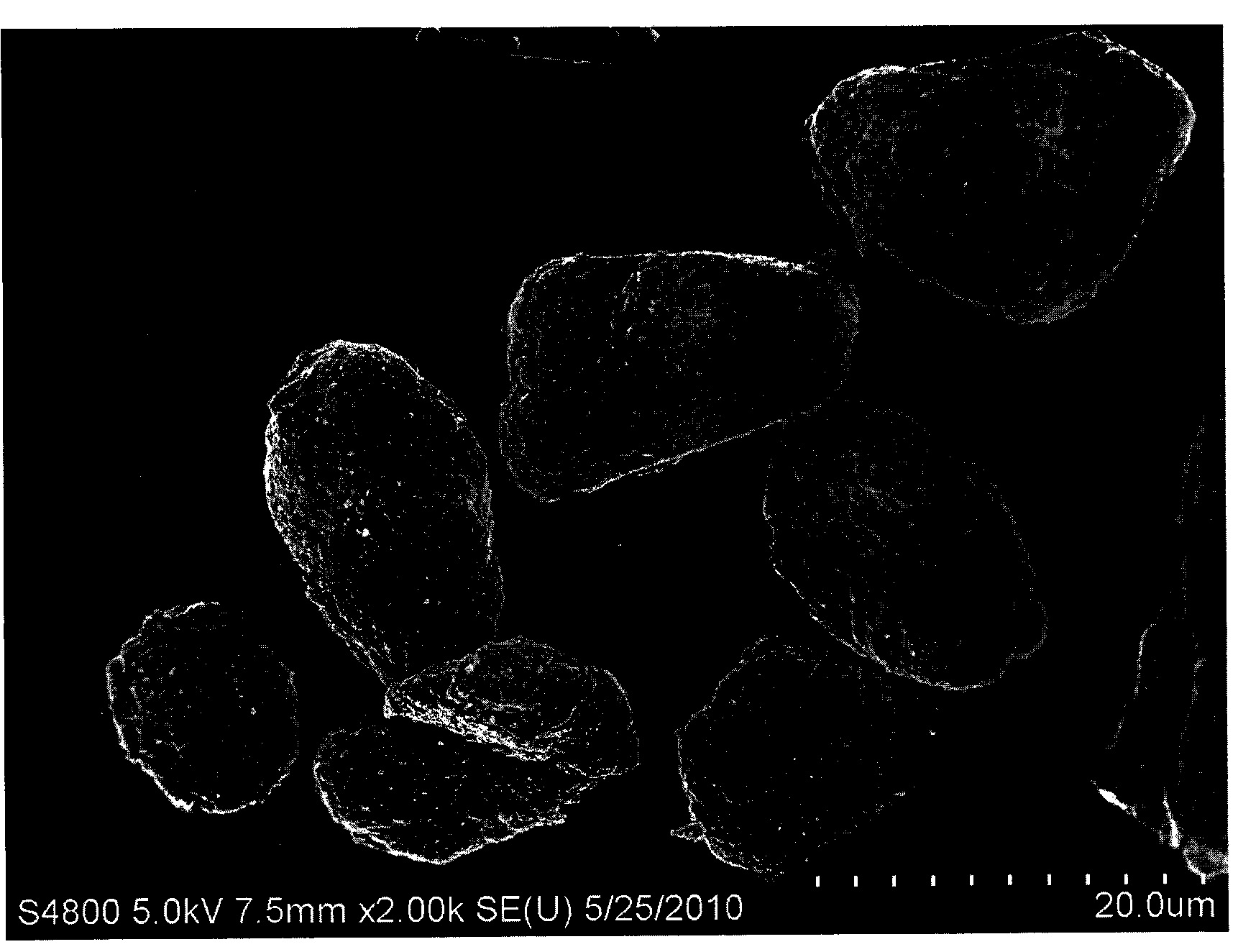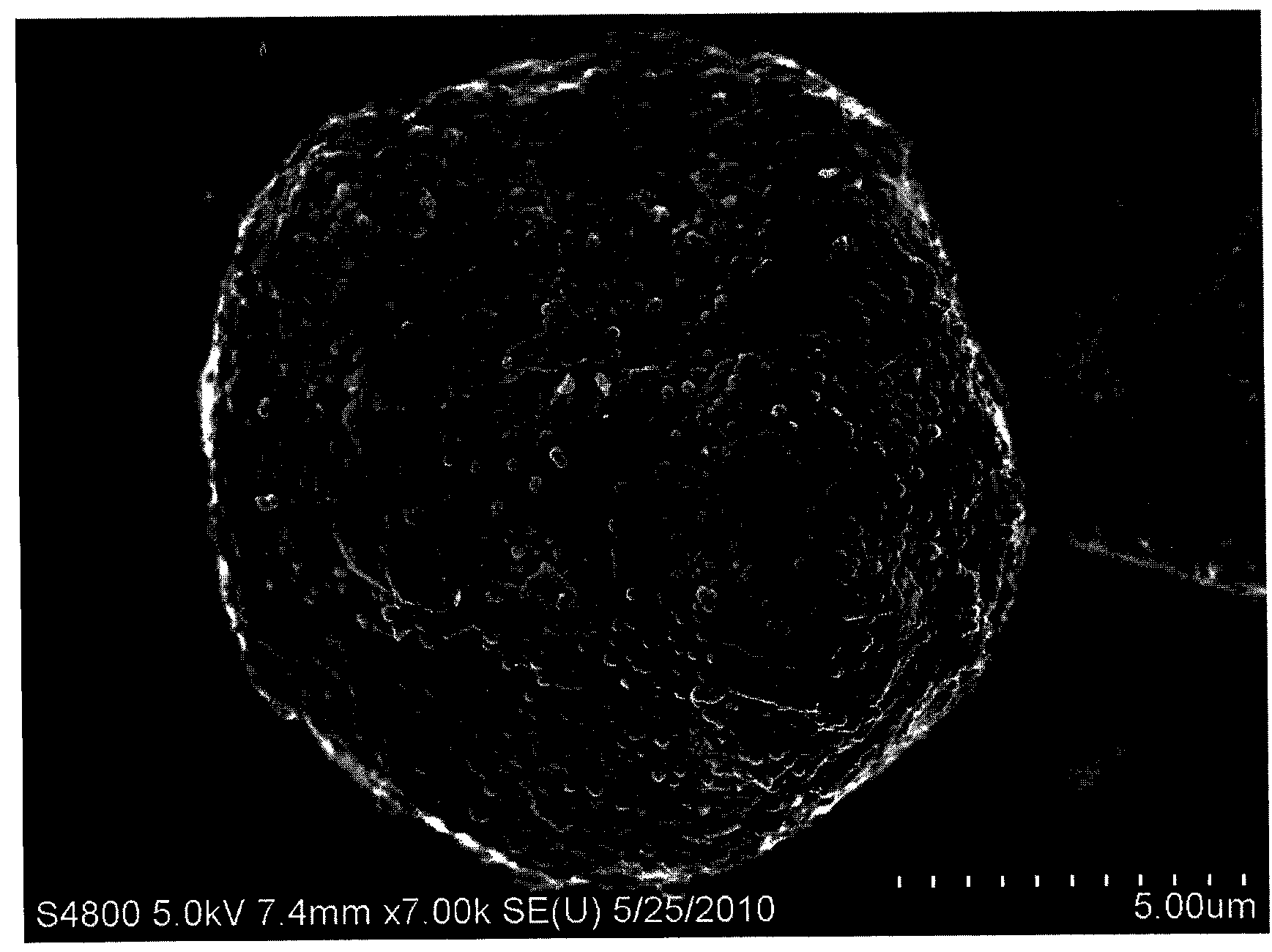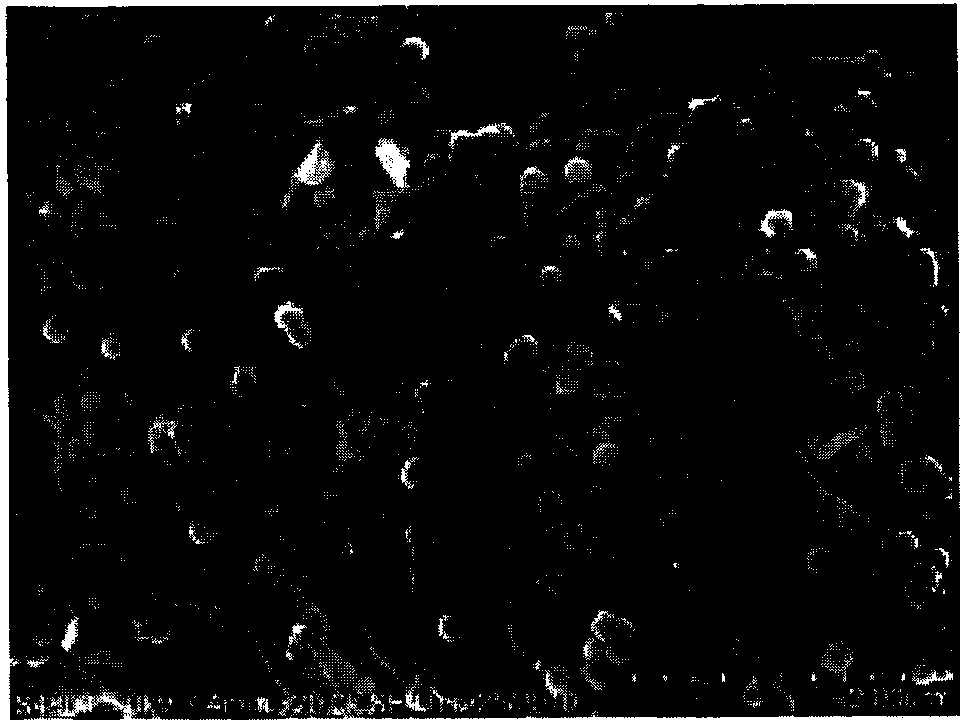Preparation method of negative active material, negative active material and lithium ion battery
A negative electrode active material and negative electrode material technology, applied in the field of preparation of negative electrode active materials, can solve the problems of improving battery capacity and cycle performance, and achieve the effect of improving capacity and cycle performance, and fine particles
- Summary
- Abstract
- Description
- Claims
- Application Information
AI Technical Summary
Problems solved by technology
Method used
Image
Examples
preparation example Construction
[0032] The preparation method of the negative electrode active material disclosed in the present invention comprises:
[0033] a. Blending the aqueous solution of graphite, organic polymer and tin-containing compound to obtain a mixed system;
[0034] B, under the condition of stirring, add complexing agent in described mixing system;
[0035] c. Adding a reducing agent to the product of step b to react, and then filtering, washing and drying to obtain a negative electrode active material.
[0036] According to the present invention, the above-mentioned graphite can be selected from graphite materials known in the art, and preferably, spherical graphite or flake graphite can be selected. The organic polymer can also adopt various organic polymers commonly used in the art, for example, the organic polymer is selected from asphalt, polyoxyethylene-polyoxypropylene-polyoxyethylene, polyvinylidene fluoride, polytetrafluoroethylene One or more of, preferably polyoxyethylene-polyo...
Embodiment 1
[0068] This example is used to illustrate the preparation method of the negative electrode active material disclosed in the present invention.
[0069] Mix 50g of graphite with the organic polymer polyoxyethylene-polyoxypropylene-polyoxyethylene (P123) at a mass ratio of 10:1, and take 21.5g of SnCl 4 Dissolve in water to make 400ml of solution, add to the above mixture and mix and stir, put the mixture in a volumetric flask, put it in a water bath and heat up to 85°C, take 20.5g of citric acid and deionized water to make a 250ml solution, and Slowly drop into the volumetric flask, then take 60g of sodium borohydride and add deionized water to make a 250ml solution, slowly drop into the volumetric flask, stir at a constant temperature of 85°C for 2h, filter and dry the reacted solution at 80°C Sample A1 was obtained after vacuum drying for 12 hours.
Embodiment 2
[0071] This example is used to illustrate the preparation method of the negative electrode active material disclosed in the present invention.
[0072] Blend 500g of sulfuric acid with a concentration of 98% and 50g of graphite, heat to 85°C, stir for 3 hours, wash and filter the solution, dry at 60°C for 12 hours, mix the acidified graphite with organic polymer P123, the mass ratio is 10:1, take 21.5g of SnCl at the same time 4 Dissolve in water to form a 400ml solution, add it to the above mixture, mix and stir, put the mixture in a volumetric flask, put it in a water bath, and raise the temperature to 85°C, take 28g of citric acid and deionized water to form a 250ml solution, and slowly Drop into the volumetric flask, then take 60g of sodium borohydride and add deionized water to form a solution of 250ml, slowly drop into the volumetric flask, stir at a constant temperature of 85°C for 2h, filter and dry the reacted solution at 80°C Sample A2 was obtained after vacuum dryi...
PUM
| Property | Measurement | Unit |
|---|---|---|
| particle size | aaaaa | aaaaa |
| thickness | aaaaa | aaaaa |
Abstract
Description
Claims
Application Information
 Login to View More
Login to View More - Generate Ideas
- Intellectual Property
- Life Sciences
- Materials
- Tech Scout
- Unparalleled Data Quality
- Higher Quality Content
- 60% Fewer Hallucinations
Browse by: Latest US Patents, China's latest patents, Technical Efficacy Thesaurus, Application Domain, Technology Topic, Popular Technical Reports.
© 2025 PatSnap. All rights reserved.Legal|Privacy policy|Modern Slavery Act Transparency Statement|Sitemap|About US| Contact US: help@patsnap.com



